Black raspberries or her second name black-like raspberry belongs to the family of rustic and is a perennial shrub with arc-shaped stems covered with sharp spikes, the length of which reaches up to 3 meters. Motherland of Black Raspberry - North America. Black raspberries and blackberries are very similar, sometimes their berries are confused, but the difference between them exists: Ripe raspberry berries are easily removed from the fruits, and blackberry berries come off with a color.
Black Malina: a description of the culture and its useful properties
In the household plots it is not so often you can meet these chic bushes with black berries, and in vain, because black raspberry is not only a decorative plant, decoration of any garden or cottage, but also brings more harvest than traditional red and yellow raspberries.
What is the difference between the blackfold from traditional red varieties:
- Blackfold Malina does not form root piglets, so its bushes can be placed among other shrubs, trees, colors and beds;
- It has increased drought resistance, pick up solar, well-lit garden sections;
- Ripe black raspberry berries do not appear and fruit before red;
- Only some grades of black-like raspberry frost resistant, the plant requires protection against wind in the winter. To prevent breakdowns of shoots and their icing, they are recommended to bind;
- Black raspberries are resistant to pests and diseases;
- No special care is required. Regular watering and feeding are needed;
- The plant has a powerful root system.
What are the advantages of black raspberry
Black raspberry berries have a wonderful taste, sweeter than the red raspberry. Some varieties have honey taste, and high yield attracts special attention of gardeners. With proper care, one bush gives up to 4 kg of fragrant berries. Berries elastic, easy to transport. Berries of raspberry black can not only be coming in a fresh form, they can be harvested for the winter in the form of conservation or freeze.
The berries of the hedivique-like raspberry have the same therapeutic properties as red, but their biochemical composition is different. They contain more vitamin P, which is responsible for strengthening the walls of vessels and ellagic acid, effective in the fight against onco-scab. The black raspberry leaves contain substances that increase blood clotting, contribute to reduced the level of prothrombins.
Malina varieties
- Litage. Early grade derived in Poland recently - in 2008. The raspberry raspberry bush has rigid curved shoots with numerous large and tight spikes. Berries of small and medium sizes closer to spherical shape have a specific gray or nasy flask.
- Corner. Another early grade. His bush of middle force, not forming a pig. Soothes have an arcooked form, can reach up to 2.5 m in length, there are small spikes. Berries of varieties are small, but juicy with sour and sweet taste, slightly pubescent. The variety yield is high, stable as freezing.
- Bristol. One of the best varieties of black raspberry, which gives the highest yields. High force bushes with shoots up to 3 meters long. Berries of practically round shape, have a little bluish flare, with sweet and juicy taste. Bristol variety plants prefer garden solar places with weakly acidic soil, does not tolerate frosts and susceptible to anthracnose.
- Boisenberry. Early variety having a powerful bush with shoots up to 3 meters. A distinctive feature of the variety is the lack of spikes on the stems. Berries have a slightly oblong shape, large and have shine. To taste very sweet. The grade gives high yield and perfectly tolerates the winter, resistant to diseases and pests.
- New Logan. Refers to a early expensive high-yielding grade, the height of the bush reaches two meters, needs shelter for the winter. Berries juicy and shiny.
- Malina Black Kumberland. The most common early variety, which is distinguished by an arcuate powerful bush with spikes on shoots. Berries dense to taste remind his blackberry, consider this variety in more detail.
Kumberland grade: description and features
The Kumberland grade is confidently becoming popular among the gardeners, his attractiveness is that it does not form the root row, it simplifies the country's gardening, and also a high-yielding and frost-resistant variety. Visually, the Kumberland bushes are similar to blackberry, but have a number of significant differences and characteristic features:
- At the variety of black raspberry, Kumberland thick, powerful shoots that reach a length of up to 3.5 meters;
- cultivar is resistant to pests and diseases;
- high yielding varieties for 12-14 years;
- frost plants (not even afraid of severe frosts);
- berries with a touch of blackberry;
- it does not form root shoots.
Black raspberries Cumberland landing
Planted seedlings of black raspberries in early spring, as the growing process of the plant begins early. pit depth for planting should be at least 0.5 meters, and a width of 50 cm filled with half holes humus wood ash (1: 1)., into which a seedling. Roots should be carefully flattened, covered with soil (sand and mixed with a complex fertilizer) and then watered.
Black raspberries Cumberland, care
Black Raspberry Cumberland care which under the force of even beginning gardeners, with regular pruning will be a wonderful decoration of suburban area in the form of hedge. Her lush bushes with slightly curved spines, are not attractive to birds who are indifferent to the black fruits.
It is very important to take care of the support of the plant in advance, the height of which will reach up to 3 meters with a thickness of 3 cm. Therefore, to remove the load from the bushes, it is necessary to construct a wire support to maintain shoots. To do this, at the beginning and end of the row there are powerful wooden columns with a height of 2-2.5 meters, on which a solid wire in three rows should be fixed at an altitude of 0.5 m, 1.8 m and 2.1 m. Gudders are often used by a black bush Raspberries as a living hedge and they fasten shoots on the fence or fix them on the sunny side of the house.
Trimming. The plant needs pruning, to neglect which it is extremely not desirable. With untimely shortening of branching shoots, the bush will grow and will reduce its yield. Pruning is carried out twice a year: the first at the end of June, and the second is late in the fall, when the temperature has not yet dropped to a minus mark. Performing summer trimming, cuts up the top of 1.7 meters at an altitude of 1.7 meters. Such manipulations will contribute to the more intensive development of young shoots, the number of which can reach from 6 to 8 pieces.
Autumn trimming is necessary to remove biennial escapes that have already replicated. And annual shoots are subjected to pruning up to 30-50 cm above the ground. It is very important to properly prepare a plant for winter. To do this, the shoots of black raspberries must be fixed at the ground (not too low) metal brackets, in the additional shelter does not need a plant, since the grade is frost-resistant and excellently transfers even the most severe winter under the snow.
In the case of a slight snowy winter, all the snow is recommended to shit into a pile to the shoots recorded brackets and moisten their water so that a thin ice crust is formed at the top of the snowdrift. Spring shoots should be released from the bracket and strengthen them on the support. Dry, broken branches are cut to base. Despite the unpretentiousness of the culture, the quomberland variety reacts perfectly to a timely feeding, which contributes to the best yield.
Feeding For the season it will be necessary three feeders:
The first feeding is needed after the bush is wondering. The fertilizer is suitable for induction from manure and chicken litter, which is divorced by water in proportions 1: 6 - for manure and 1:16 - for bird litter. 1 liter of ash and 50 g of superphosphate are added to each 10 liter of prepared fertilizer. One bush of black raspberry needs a bucket of feeding, after which the bush should be poured with water (4-5 liters.)
The next time the feeding is carried out during the ripening of berries, and the third after the removal of the first fruit. The solution is prepared similar as for the first feeding.
Reproduction. A variety of grade horizontal grains. In early spring, cropping the shoots of a maternal bush with a height of 10-15 cm above the Earth for 2 years. During the summer period, 5-6 shoots are formed from the top of the root of the plant, which in the spring must be pissed in the grooves in 5-7 cm deep for the formation of the apparent roots.
Features of the landing of black raspberry
Black raspberry, regardless of the variety, is good and grows, but the yield of culture is still depends on the selected place of its landing and high-quality care.
Selecting a seat for landing:
- Black raspberry raspberries, perfectly transfers drought, but the wind and drafts are afraid;
- The neighbors of black raspberries cannot be of grated cultures (eggplants, tomatoes, potatoes), as well as her relative of the blackberry. This neighborhood can lead to a plant disease with fungi and a dangerous disease - a verticillaty fading;
- The optimal distance can be considered 80 cm between bushes, and rows - 2 meters so that the bushes evenly warmed the solar rays for rapid ripening of fruits. Thanks to this planting behind the plant, it is easier to care for and cutting.
Black Malina Saplings of which you will get, needs a special place for landing in early spring. It should be selected for it protected from wind and draft space. The soil is desirable to pick up the black earth and well-fertilous. This culture can not grow next door to potatoes, tomatoes, blackberry bushes or red-bed raspberry.
On the land plot where the planting of culture will be carried out, landing pits will be prepared, the depth of which should be about 0.5 meters between the pits of 1.5 - 2 meters. Poams are filled up to half with humid, mixed with wood ash. The raspberry seedlings are descended into the pits, the soil is sprinkled, which should be mixed with the complex fertilizer, and then pour out.
Reproduction
We bring raspberries with malina. Closer to the fall, when the stems are pulled out, they are flexible to the ground and put into the grooves to 10 cm deep into the grooves, then the ground is falling asleep, sprinkle with sawdust, peat, straw.
Black Raspberry, Care
The quality of the soil directly affects the yield of the raspberry. Ideal will be fertile lightweight sublinous soil with sufficient content of minerals and nutrient elements. In the soil of this type of moisture, it is not stuck and it remains breathable.
Mulching. After planting a seedling, the soil needs mulching with dry grass, straw, sawdust, peat or manure.
Watering. Black raspberry bushes do not need abundant irrigation, even in dry summer. But, during the ripening of fruits, it is necessary to irrigate so that the berries are larger and increased their yield. The most optimal watering for raspberry is drip.
Rod of raspberry. Since the shoots of raspberries grow rapidly, they need a garter on supports or fences. As a support, pillars are used in the beginning and end of the row, and the wire is tensioned between them in several rows, stalks are fixed on it.
Trimming. Trimming black raspberry is necessary for yield. Summer and autumn trimming is carried out. Summer trim is carried out at the end of June and is to shorten the escape from which new branches are formed, which will be presented with a harvest .. the autumn trimming can be called a sanitary and preparatory stage to wintering. Prothesiation of shoots for a length of 30-50 cm, and dry, old, broken branches are removed.
Black raspberry protection against diseases and pests
The most dangerous disease of the black raspberry is a vertical wilt, which unfortunately is not treated. Therefore, it is important to purchase a healthy plant, comply with the recommendations when landing and draining the soil. Insufficient drainage of the soil along with rainy summer can lead to fungal diseases of the plant. To prevent them, it is recommended to spray black raspberries with a drug containing copper and use to prevent insecticides.
Another danger that seesing the culture is a raspberry beetle, to combat whose bruises of the bushes with a two-percent solution of nitrafen to the awakening of the kidneys. The re-spraying is made during the appearance of floral kidney raspberry. Preparing a tincture of bitter wormwood and velvetsev (200 grams of herbs on 10 liters of water)
Black raspberry, photo
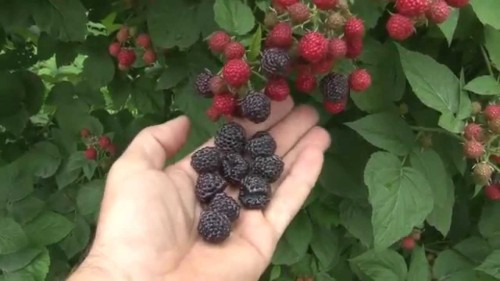
Black raspberries - a wonderful, useful berry, which in its taste is not inferior to the raspberry of red varieties, with proper care, the lush bushes will become an excellent decoration of the country area, and will delight you with generous crops.


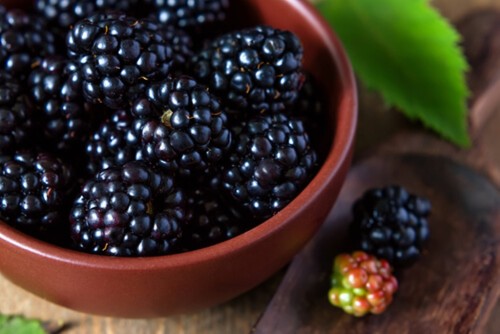
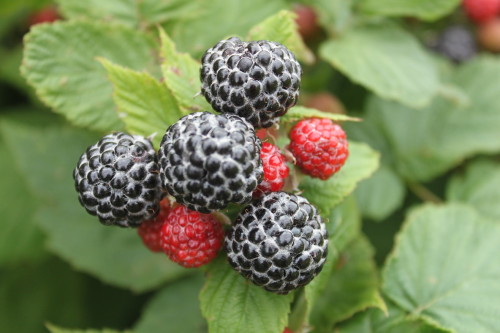
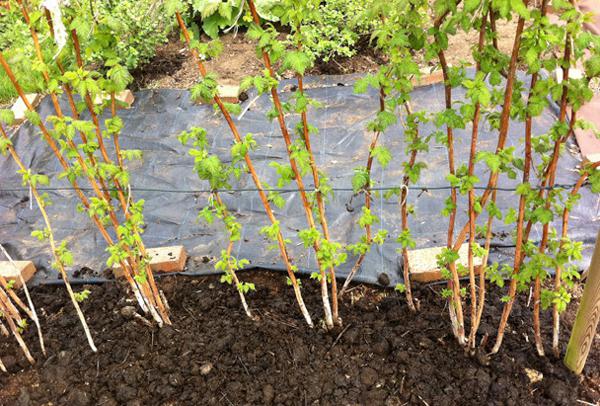
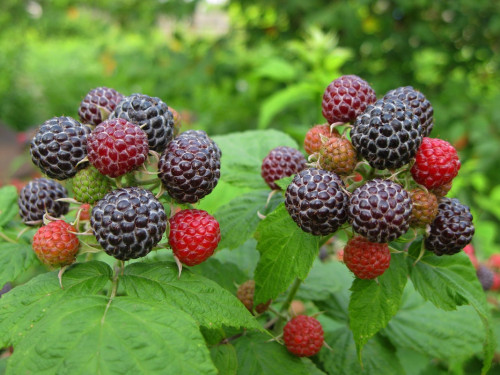
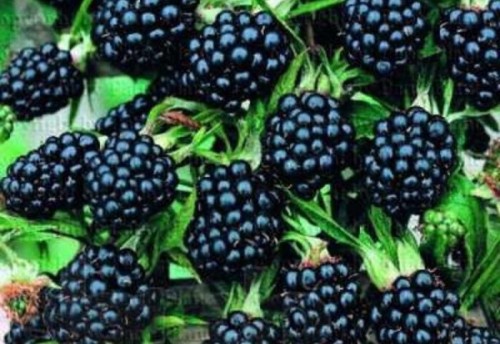












 Start a discussion ...
Start a discussion ...